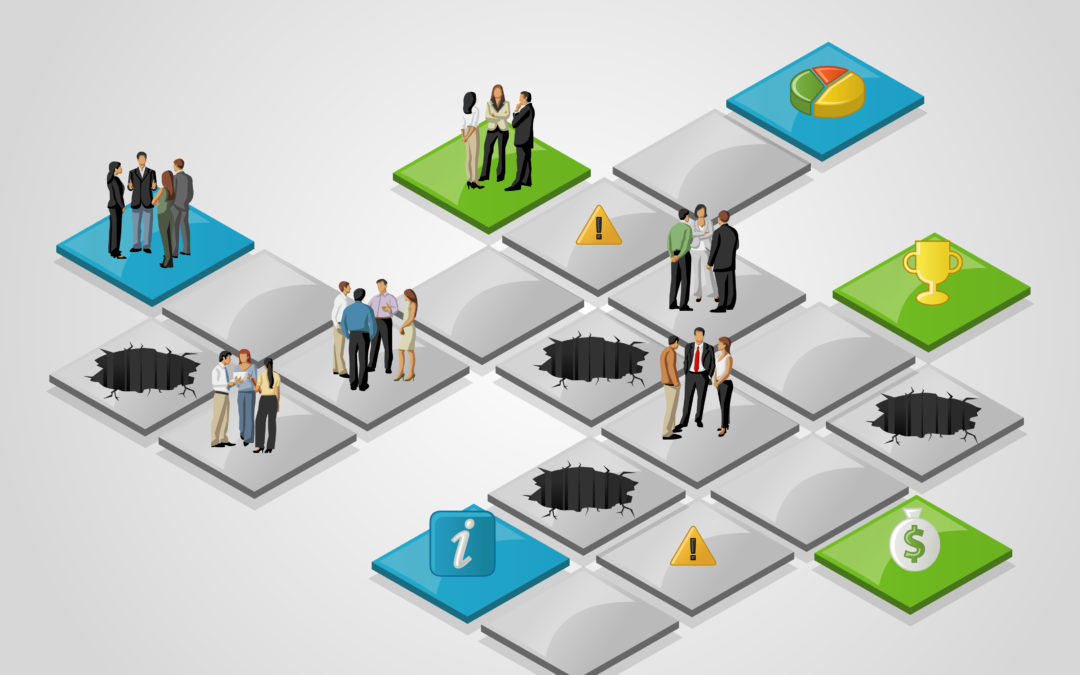Is your Customer Advisory Board (CAB) giving you powerful information about your customers and their Buyer’s Journey? If not, you are leaving a lot of your marketing strategy to chance.
Customers often complain that vendors don’t understand their business. The CAB program and a Buyer’s Journey project give you a 2-pronged opportunity to show you are listening. They share a common objective: to develop an in depth appreciation and understanding about your B2B customers. If you use them together, strategically, you can strengthen customer loyalty simply because it becomes immediately clear that you are paying attention to their needs. This alone gives you a competitive advantage (i.e. staying power) in a competitive marketplace where the average vendor cares only about making a quick buck.
First let’s start with a couple of definitions:
A CAB program is a strategy-level set of conversations between a dozen decision makers from your most strategic customers and members of your executive staff. These discussions revolve around trends, drivers, and priorities facing your customers. Although we do want to collect information and guidance on product roadmaps, the CAB is not product focus group. Instead, the CAB is a tool used to better understand how you company’s vision and value proposition will help your customers achieve their goals and business objectives. And, you want to know how their priorities may be changing or evolving in the future so you can guide your business accordingly. This is the key to ensuring your business maintains its leadership position and remains relevant to your customers 3 years from now.
Watch: What is a Customer Advisory Board?
Read: 5 Tips: Do you know the voice of your customer?
Read: The differences between CABs and Product Focus Groups
Watch: Get the most out of your CAB
A project designed to map the Buyer’s Journey provides you with a grounded and complete perspective of how and when they make purchase decisions, and why they make the investment choices they do. The Buyer’s Journey is often confused with a company’s sales process. It’s the exact opposite. The Buyer’s Journey is an illustration of the process, questions, and decision steps a customer goes through before reaching the conclusion of purchasing any given product or service. In B2B contexts, the Buyer’s Journey can often be complex and lengthy. And, consider that as much as 80% of this process may take place before you (the vendor) are even aware that they are looking for you. This means that if you don’t ask them, you will never know.
Exploring the Buyer’s Journey
Ideally, a company will invest in a Buyer’s Journey project whereby a cross-functional team of marketers, product managers, and perhaps customer support reps team up to interview a set of customers. If your sales process is complex, then you already know your buyer’s journey is equally complex. It may take as long as a year or more to completely understand the nuances and variations associated with the general process of how your customers become aware of, interested in, preferring, and ultimately purchasing your products or services. Understanding the Buyer’s Journey allows you to answer questions like:
- What are the primary stages of their journey? (i.e. Problem trigger — Ops assessment — Business case — Technical criteria identification — Beta — Vendor selection — ???)
- How long is each stage of their process?
- Is their buying process formal or informal?
- Who’s involved?
- When did they first become aware of you (the vendor)?
- How, when, and where did they look for (and find) information they were looking for?
- What information is most important?
- What information was impossible or difficult to find?
- How, when, and why did they finally decide to purchase your product or service?
- And of course: What does all of this mean to your marketing and sales approach?
A carefully managed Buyer’s Journey project will provide you with a framework for your content strategy and lead generation programs. But it gives you much more than that, too. It provides you with proper context for aligning your company’s vision and value proposition — if you know how to frame the conversation in a CAB setting.
However, before you dive for the phone to start calling customers, take heed. You must be well prepared to target specific customers and ask focused questions. Having random conversations with ad hoc customers may provide some insight, but that approach will not scale. You will only confuse yourself. Instead, you need to treat this as a strategic project, complete with a clear objective, timeline, and expectations for success. It is also imperative that your team embrace some Buyer’s Journey training so you can hone your interviewing skills. It’s not enough to hear the answers; you need to learn how to listen for clues customers offer that are hidden underneath their words.
Read:10 Tips for conducting customer interviews for a Buyer’s Journey project
Bridging the gap
Once you collect this information (a minimum of 8 customer interviews), you can begin to build a hypothesis. Now you need a place to test it. The CAB is a perfect venue to share what you’ve learned. Ask your CAB customers to fill in the gaps. Having guided B2B CAB meetings and led Buyer’s Journey projects for the past 14 years, I can share with complete confidence that you will learn things you did not know before about your customers’ buying process, their values, and how you can help them succeed.
Because whoever understands the customer best, wins!
For more tips and tricks for conducting a world-class Buyer’s Journey project or guiding your CAB, please contact Mike Gospe or visit KickStart Alliance.
Mike Gospe is a marketing strategist and professional facilitator of Customer Advisory Boards (CABs) and an expert in Buyer’s Journey and Voice-of-the-Customer programs.

